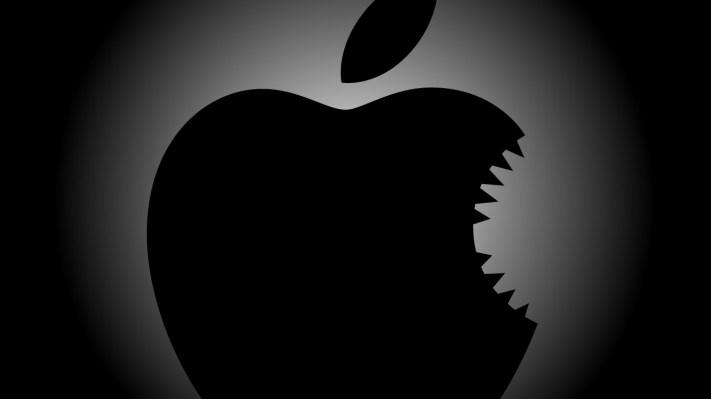Apple’s WWDC keynote had a message for cloud service providers. Apple knows it has the devices inside the enterprise, whether iPhone, iPad and even Macs, and it wants more than just the hardware business. It wants everything. And it’s coming for you.
That’s right, Apple wants to capture the cloud and provide the services you need to run the device. And we’re not talking just iWork here, either, although that’s clearly part of it. There’s iDrive, the cloud storage service aiming straight for Dropbox (and maybe even Box).
There’s CloudKit, the infrastructure service that appears to want a piece of the infrastructure market controlled by Amazon, Google and Microsoft. CloudKit provides a way to access data and storage services on the back end for iOS applications and if it’s good for the consumer facing apps, chances are it’s good for enterprise apps too.
Apple didn’t forget developers with Swift, a new development language meant to replace Objective C, which could ultimately have an impact on enterprise developers. On its face at least, Apple says it should simplify development. Whether that happens in practice, we shall see.
And let’s not forget an enhanced iMessage messaging app, which if enough employees are using Apple products could provide a unified communications platform. That’s another shot across Microsoft’s and Google’s bow, in case you didn’t notice.
Brian Katz, who is director and head of mobility at Sanofi, says there are even more changes under the hood that should appeal to enterprises. “Apple seems to be extending their feature set around security, such as now encrypting all file types and apps and filling in missing enterprise features, such as Out of Office assistant,” Katz wrote to me in an email. “They also have enabled secured sandbox sharing (extensions) that lead to more comfort around putting enterprise data on their hardware.”
Further, he sees this as a shot at Microsoft more than anything, especially the handoff feature. “It appears that Apple is trying to differentiate from Microsoft and the need for a single device by showing their continuity/hand-off concept. Work with the best device for the job and hand off to the right device when the need arises,” he wrote.
Wayne Rash writing on eWeek agrees saying it might not beat Microsoft in the enterprise, but the new enterprise-friendly features certainly enable it to hold its own.
Before we get too far ahead of ourselves, though, let’s not forget that just because Apple put all these services and features out there doesn’t mean it’s automatically a slam dunk. Before people make changes — whether at an organizational or personal level — there needs to be a pain point.
If developers are happy connecting to AWS, then Apple has to give them incentives to change. If they are satisfied using Lync or Google Hangouts or even Skype, why should they switch to iMessage?
This is a legitimate questions and we need to wait and see if Apple can actually execute on these items and deliver Apple-quality services that make people stand up and take notice. Because let’s face it, until now Apple hasn’t done a bang up job of cloud services.
As an industry insider told me, perhaps this collection of ideas announced at WWDC is tacit recognition that it’s just really hard to get those mega-hits like iPod, iPad and iPhone, and they need to try a bunch of different things moving forward to succeed.
But as this person also pointed out, you have to attack an area that’s ripe for change, which is what Apple did with iPod all those years ago. They didn’t invent the MP3 player, they designed a better MP3 player than everyone else. He wonders if going after Dropbox is the best approach because people like Dropbox and there’s little reason to change.
The other big point he made was that it’s not easy to become a service company. It takes a significant investment in operations, and while Apple runs some big data centers, he said they still don’t have the large talent pool that cloud companies need to be successful — and he wonders if Apple is willing to make that investment to make it as a “cloud as a service” provider.
As he said, Apple’s high margin hardware success is unique and it’s hard to sustain long-term. Maybe this set of services is simply recognizing (in the same way IBM has recognized) that you can’t live on hardware sales anymore. You need a package of cloud services to make money these days and Apple appears to moving in that direction.
When you look across the whole package of what Apple is offering here, it seems to want a piece of the entire cloud across infrastructure, platform and software as a service — and a range of enterprise-friendly features. If Apple can make the necessary investments, make it work across platforms (as any cloud service should) and hire the right personnel, it can succeed. But this isn’t an easy road by any means.
If it all works out that way, that’s great for Apple, but whatever happens, it’s clear the company has a plan to move into the enterprise and that means Amazon, Microsoft and Google better watch their backs because Apple wants a piece of their action. But it takes more than wanting. It takes doing and Apple has to make some big changes to succeed.
